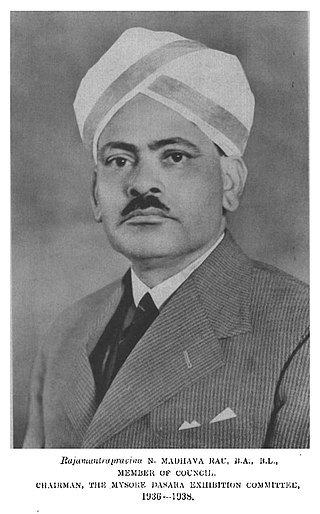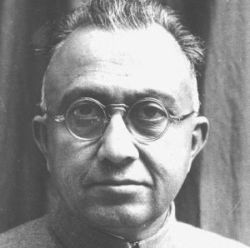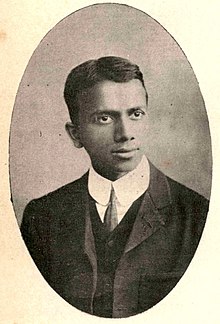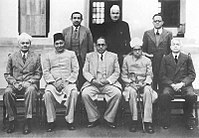
Bhimrao Ramji Ambedkar was an Indian jurist, economist, social reformer and political leader who headed the committee drafting the Constitution of India from the Constituent Assembly debates, served as Law and Justice minister in the first cabinet of Jawaharlal Nehru, and inspired the Dalit Buddhist movement after renouncing Hinduism.

The Constitution of India is the supreme law of India. The document lays down the framework that demarcates fundamental political code, structure, procedures, powers, and duties of government institutions and sets out fundamental rights, directive principles, and the duties of citizens, based on the proposal suggested by M. N. Roy. It is the longest written national constitution in the world.

Sir Tej Bahadur Sapru was an Indian freedom fighter, lawyer, and politician. He was a key figure in India's struggle for independence, helping draft the Indian Constitution. He was the leader of the Liberal party in British-ruled India.

The Constituent Assembly of India was elected to frame the Constitution of India. It was elected by the 'Provincial Assembly'. Following India's independence from the British rule in 1947, its members served as the nation's first Parliament as the 'Provisional Parliament of India'. It was conceived and created by V. K. Krishna Menon, who first outlined its necessity in 1933 and enshrined it as a Congress demand.
The three Round Table Conferences of 1930–1932 were a series of peace conferences organized by the British Government and Indian political personalities to discuss constitutional reforms in India. These started in November 1930 and ended in December 1932. They were conducted as per the recommendation of Muhammad Ali Jinnah to Viceroy Lord Irwin and Prime Minister Ramsay MacDonald, and by the report submitted by the Simon Commission in May 1930. Demands for Swaraj or self-rule in India had been growing increasingly strong. B. R. Ambedkar, Jinnah, Sir Tej Bahadur Sapru, V. S. Srinivasa Sastri, Sir Muhammad Zafrulla Khan, K. T. Paul and Mirabehn were key participants from India. By the 1930s, many British politicians believed that India needed to move towards dominion status. However, there were significant disagreements between the Indian and the British political parties that the Conferences would not resolve. The key topic was about constitution and India which was mainly discussed in that conference. There were three Round Table Conferences from 1930 to 1932.

The Fundamental Rights, Directive Principles of State Policy and Fundamental Duties' are sections of the Constitution of India that prescribe the fundamental obligations of the states to its citizens and the duties and the rights of the citizens to the State. These sections are considered vital elements of the constitution, which was developed between 1949 by the Constituent Assembly of India.

Republic Day is a national holiday in India commemorating the adoption of the Constitution of India, and the country's transition to a republic which came into effect on 26 January 1950.

Article 370 of the Indian constitution gave special status to Jammu and Kashmir, a region located in the northern part of the Indian subcontinent and part of the larger region of Kashmir which has been the subject of a dispute between India, Pakistan and China since 1947. Jammu and Kashmir was administered by India as a state from 17 November 1952 to 31 October 2019, and Article 370 conferred on it the power to have a separate constitution, a state flag, and autonomy of internal administration.
The Fundamental Rights in India enshrined in part III of the Constitution of India guarantee civil liberties such that all Indians can lead their lives in peace and harmony as citizens of India. These rights are known as "fundamental" as they are the most essential for all-round development i.e., material, intellectual, moral and spiritual and protected by fundamental law of the land i.e. constitution. If the rights provided by Constitution especially the Fundamental rights are violated the Supreme Court and the High Courts can issue writs under Articles 32 and 226 of the Constitution, respectively, directing the State Machinery for enforcement of the fundamental rights.
The Directive Principles of State Policy of India are the guidelines to be followed by the government of India for the governance of the country. They are not enforceable by any court, but the principles laid down there are considered 'Fundamental' in the governance of the country, which makes it the duty of the State to apply these principles in making laws to establish a just society in the country. The principles have been inspired by the Directive Principles given in the Constitution of Ireland which are related to socialjustice, economic welfare, foreign policy, and legal and administrative matters.

Sir Benegal Rama Rau CIE, ICS was the fourth Governor of the Reserve Bank of India from 1 July 1949 to 14 January 1957.
Benegal is a village in Brahmavar taluk of Udupi District of Karnataka State in India.

The Preamble to the Constitution of India presents the principles of the Constitution and indicates the sources of its authority. The preamble is based on the Objectives Resolution, which was moved in the Constituent Assembly by Jawaharlal Nehru on 13 December 1946 accepted on 22 January 1947 and adopted by the Constituent Assembly on 26 November 1949, coming into force on 26 January 1950, celebrated as the Republic Day of India, and was initially drafted by V. K. Krishna Menon. Menon explicitly did not include the words "socialist" or "secular", after consultation with Nehru; the text was later amended during the Indian emergency by Indira Gandhi where the words "socialist", "secular" and "integrity" were added.
The Hindu code bills were several laws passed in the 1950s that aimed to codify and reform Hindu personal law in India, abolishing religious law in favor of a common law code. The Indian National Congress government led by Prime Minister Jawaharlal Nehru successfully implemented the reforms in 1950s. This process was started during the British rule of India.
Amending the Constitution of India is the process of making changes to the nation's fundamental law or supreme law. The procedure of amendment in the constitution is laid down in Part XX of the Constitution of India. This procedure ensures the sanctity of the Constitution of India and keeps a check on arbitrary power of the Parliament of India.

SirNyapathi Madhava Rau was an Indian civil servant, administrator, and statesman who served as the 23rd dewan of Mysore from 1941 to 1945 and later as a member of the Drafting Committee of the Constituent Assembly which drafted the Indian Constitution.

Benegal Shiva Rao was an Indian journalist and politician. He was a member of the Constituent Assembly of India and an elected representative of the South Kanara constituency in the First Lok Sabha. He was the correspondent of The Hindu and then of the Manchester Guardian. He was also a member of the Rajya Sabha from 1957 - 1960 and a recipient of the civilian honour of the Padma Bhushan.

Constitution Day, also known as "National Law Day", is celebrated in India on 26 November every year to commemorate the adoption of the Constitution of India. On 26 November 1949, the Constituent Assembly of India adopted to the Constitution of India, and it came into effect on 26 January 1950.

Khushal Talaksi Shah was an Indian economist, advocate and socialist best known for his active role as a member of the Constituent Assembly of India that was responsible for framing of the Indian Constitution. An alumnus of the London School of Economics and Gray's Inn, he practiced as an advocate in Bombay from 1914. He was the main rival candidate in the first presidential election of Independent India, losing to Dr. Rajendra Prasad after securing 15.3% of votes. He died in March 1953.
Judicial review in India is a process by which the Supreme Court and the High Courts of India examine, determine and invalidate the Executive or Legislative actions inconsistent with the Constitution of India. The word judicial review finds no mention in the Constitution of India but The Constitution of India implicitly provides for judicial review through Articles 13, 32 and through 136, 142 and 226.












